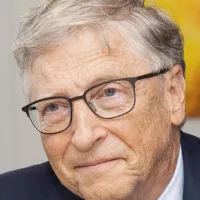Fentanyl is a potent synthetic opioid analgesic, significantly stronger than heroin and morphine. Clinically, it's used for severe pain management, particularly in cancer patients and post-operative care, and as a sedative. It acts by activating μ-opioid receptors in the brain. Due to its high potency, even small amounts can cause overdose, depending on the delivery method. Fentanyl is sold under various brand names, including Actiq, Duragesic, and Sublimaze.
1959: Fentanyl synthesized
In 1959, Paul Janssen first synthesized Fentanyl.
1964: Patent of Original Synthesis
In 1964, Paul Janssen patented the original synthesis of Fentanyl, which involves the synthesis of benzylfentanyl from N-benzyl-4-Piperidone.
1968: Fentanyl approved for medical use in the US
In 1968, Fentanyl was approved for medical use in the United States and fentanyl citrate entered medical use as a general anesthetic, manufactured by McNeil Laboratories under the brand name Sublimaze.
1968: Medical Use of Fentanyl Citrate
In 1968, fentanyl citrate entered medical use as a general anesthetic, manufactured by McNeil Laboratories under the brand name Sublimaze.
1971: Classification in the UK
In the UK, fentanyl is classified as a controlled Class A drug under the Misuse of Drugs Act 1971.
1978: Siegfried Method Described
In 1978, the Siegfried method for synthesizing fentanyl was initially described.
1998: Introduction of Actiq
In 1998, Actiq, a flavored lollipop of fentanyl citrate mixed with inert fillers, was introduced as a quick-acting formation of fentanyl for use with chronic breakthrough pain.
1999: Pediatric Fentanyl Deaths
In a report published in JAMA Pediatrics, fatal pediatric cases related to fentanyl were analyzed from 1999 to 2021.
2002: Fentanyl analogue used in Moscow theater hostage crisis
In 2002, Russian Spetsnaz security forces are suspected of using a fentanyl analogue to incapacitate people in the Moscow theater hostage crisis. Many hostages died from the gas after their health was severely taxed during the days-long siege.
2004: Fentanyl PCTS Experiment
In 2004, an experiment involving 189 patients tested a fentanyl patient-controlled transdermal system (PCTS) for postoperative pain, showing it was superior to placebo but with a 25% withdrawal rate due to inadequate analgesia.
2006: Outbreak of overdose deaths
In 2006, a surge of overdose deaths occurred in the United States and Canada due to illegally manufactured, non-pharmaceutical fentanyl being mixed with cocaine or heroin, particularly affecting cities such as Dayton, Ohio; Chicago, Illinois; Detroit, Michigan; and Philadelphia, Pennsylvania.
2006: FDA Investigates Respiratory Deaths
In 2006, the United States Food and Drug Administration (FDA) began investigating several respiratory deaths related to fentanyl.
2007: Investigations into Actiq Diversion
In 2007, the attorneys general of Connecticut and Pennsylvania launched investigations into the diversion of the Actiq lollipop formulation from the legitimate pharmaceutical market, including Cephalon's "sales and promotional practices for Provigil, Actiq and Gabitril."
September 2008: UK Doctors Warned of Fentanyl Risks
In September 2008, doctors in the United Kingdom were warned of the risks associated with fentanyl.
2009: FDA Approval of Onsolis
In 2009, the US Food and Drug Administration (FDA) approved Onsolis (fentanyl buccal soluble film), a fentanyl drug in a new dosage form for cancer pain management in opioid-tolerant subjects.
2011: Increase in Overdose Deaths
From 2011 to 2021, deaths from prescription opioids remained stable, while synthetic opioid deaths, primarily from fentanyl, increased significantly.
April 2012: FDA Reports Child Deaths
In April 2012, the FDA reported that twelve young children had died and twelve more had become seriously ill from accidental exposure to fentanyl skin patches.
June 2013: CDC issues health advisory on acetylfentanyl overdoses
In June 2013, the United States Centers for Disease Control and Prevention (CDC) issued a health advisory to emergency departments about 14 overdose deaths among intravenous drug users in Rhode Island. These deaths were linked to acetylfentanyl, a synthetic opioid analog of fentanyl not approved for medical use.
July 2014: MHRA Issues Warning
In July 2014, the Medicines and Healthcare products Regulatory Agency (MHRA) of the UK issued a warning about the potential for life-threatening harm from accidental exposure to transdermal fentanyl patches, particularly in children.
2014: Increase in Fentanyl Reports
In 2014, the United States National Forensic Laboratory estimated 4,697 fentanyl reports by forensic laboratories.
September 2015: Public Health Concern in Canada
Since September 2015, death from fentanyl overdose continues to be a public health issue of national concern in Canada.
October 2015: Initial HAN Advisory
In October 2015, the U.S. Centers for Disease Control (CDC) issued an initial HAN Advisory to prevent fentanyl misuse and fatal overdose.
2015: Fentanyl overdoses in Canada begin
Beginning in 2015, Canada experienced a rise in fentanyl overdoses, suspected to be caused by the drug being imported from Asia to the western coast by organized crime groups in powder form, and pressed into pseudo-OxyContin tablets. The drug was found in other recreational drugs, including cocaine, MDMA, and heroin, leading to deaths across various demographics.
2015: Global Healthcare Use
In 2015, 1,600 kilograms (3,500 pounds) of fentanyl were used in healthcare globally.
2015: Manufacturing Quota
In 2015, the annual aggregate manufacturing quota for Fentanyl was 2,300,000 kg.
November 2016: Precursor Control Regulations
In Canada, some fentanyl precursors have been banned under its Precursor Control Regulations, which have been in place at least since November 2016.
November 2016: DEA uncovers counterfeit pill operation
In November 2016, the DEA discovered a home operation in Cottonwood Heights, Utah, manufacturing counterfeit oxycodone and Xanax pills. Approximately 70,000 pills mimicking oxycodone and over 25,000 resembling Xanax were seized. The accused had a tablet press and sourced fentanyl powder from China, potentially distributing millions of pills.
2016: Fentanyl Overdose Deaths in British Columbia
In 2016, deaths from fentanyl overdoses in the province of British Columbia averaged two persons per day.
2016: Manufacturing Quota
In 2016, the annual aggregate manufacturing quota for Fentanyl was 2,300,000 kg.
April 2017: Increased Death Rate in British Columbia
In April 2017, the death rate from fentanyl overdoses in British Columbia increased by more than 100%, with 368 overdose-related deaths between January and April.
2017: Study on Fentanyl Lozenges
A 2017 study suggested the efficacy of fentanyl lozenges in children as young as five, weighing as little as 13 kg, for pain management.
2017: Most Widely Used Opioid
As of 2017, fentanyl was the most widely used synthetic opioid in medicine.
2017: Fentanyl Deaths in the US
In 2017, fentanyl and fentanyl analogs caused over 29,000 deaths in the US, a large increase over the previous four years.
2017: Fentanyl discovered in illicit Australian markets
In 2017, fentanyl was discovered for sale in illicit markets in Australia, indicating the drug's expanding global reach.
February 2018: DEA Classifies Illicit Fentanyl Analogs
In February 2018, the U.S. Drug Enforcement Administration indicated that illicit fentanyl analogs have no medically valid use, and thus applied a "Schedule I" classification to them.
July 2018: HAN Alert on Rising Deaths
In July 2018, a subsequent HAN Alert was issued, warning of rising numbers of deaths due to fentanyl abuse and mixing with non-opioids.
August 2018: Nebraska uses fentanyl in execution
In August 2018, Nebraska became the first American state to use fentanyl to execute a prisoner. Carey Dean Moore received a lethal injection, including fentanyl citrate, at the Nebraska State Penitentiary. The use of fentanyl in execution caused concern among death penalty experts because it was part of a previously untested drug cocktail.
2018: Dark Web Bans Fentanyl Trafficking
A 2018 report by The Guardian indicated that many major drug suppliers on the dark web have voluntarily banned the trafficking of fentanyl.
2018: Fentanyl found in New Zealand, experts call for wider naloxone availability
In 2018, fentanyl was discovered in illicit markets in New Zealand, leading experts to advocate for wider availability of naloxone to combat potential overdoses.
2018: Fentanyl Overtakes Heroin
Since 2018, fentanyl has constituted the majority of all drug overdose deaths in the United States, overtaking heroin.
February 2019: Record fentanyl seizure in Arizona
In February 2019, U.S. Customs and Border Protection seized a record amount of fentanyl in Nogales, Arizona. The 254 pounds (115 kg) of fentanyl, valued at an estimated US$3.5 million, was found hidden in a compartment under a false floor of a truck transporting cucumbers.
May 2019: China Classifies Fentanyl as a Controlled Narcotic
Effective from May 1, 2019, China officially classified all forms of fentanyl as controlled narcotics.
May 2019: Record Overdose Numbers
From May 2019 to May 2020, 81,230 drug overdose deaths occurred, marking the largest number of drug overdoses for a 12-month interval ever recorded for the U.S.
May 2019: China regulates fentanyl-type drugs
In May 2019, China regulated the entire class of fentanyl-type drugs and two fentanyl precursors in an effort to combat the fentanyl crisis.
2019: Common Prescription Medication
In 2019, Fentanyl was the 278th most commonly prescribed medication in the United States, with over a million prescriptions.
2019: Surge in overdose deaths due to fentanyl
Since 2019, the U.S. has experienced a surge in overdose deaths due to fentanyl and other illegally imported opioids, becoming a major cause of death across all states.
March 2020: Acceleration of Overdose Deaths
From March 2020 to May 2020, there was a concerning acceleration of the increase in drug overdose deaths, coinciding with the implementation of widespread mitigation measures for the COVID-19 pandemic.
May 2020: Peak of Overdose Deaths Increase
From March 2020 to May 2020, the largest increase in drug overdose deaths was recorded, coinciding with the implementation of widespread mitigation measures for the COVID-19 pandemic.
May 2020: Record Overdose Numbers
From May 2019 to May 2020, 81,230 drug overdose deaths occurred, marking the largest number of drug overdoses for a 12-month interval ever recorded for the U.S.
December 2020: HAN Advisory on Overdose Deaths
In December 2020, a HAN Advisory warned of substantial increases in drug overdose deaths across the United States, primarily driven by rapid increases in overdose deaths involving illicitly manufactured fentanyl.
2020: British Columbia reports 1,716 fentanyl-related deaths
In 2020, British Columbia reported 1,716 deaths related to fentanyl, contributing to the rising number of fatalities across Canada due to the drug.
2020: Cost comparison of fentanyl products
In 2020, an 800 mcg fentanyl tablet was 6.75 times more expensive than the lozenge in the United States. Also in 2020, a 100-microgram transdermal patch was valued from between AU$75 and AU$450 on illicit markets in Australia, and the average price per gram of non-pharmaceutical fentanyl on various cryptomarkets was US$1,470.40 for offerings of less than five grams.
2020: Myanmar military confiscates methyl fentanyl and precursors
In 2020, the Myanmar military and police confiscated 990 gallons of "methyl fentanyl" and precursors used for the illicit synthesis of the drug.
2020: Sharp Increase in Fentanyl Reports
In 2020, the United States National Forensic Laboratory estimated 117,045 fentanyl reports by forensic laboratories, marking a sharp increase from previous years.
October 2021: 1,782 fentanyl deaths reported in British Columbia, Canada
From January to October 2021, British Columbia reported 1,782 deaths due to fentanyl overdoses, prompting Health Canada to expedite a review of naloxone's prescription-only status to combat the rising crisis.
2021: Predominant Synthesis Route
For the first half of 2021, the U.S. Drug Enforcement Administration found the Gupta method was the predominant synthesis route in their samples of seized fentanyl.
2021: Stable Overdose Percentage
From 2021 to 2024, the overall percentage of overdoses involving fentanyl remained stable between 70% and 80%.
2021: Overdose Deaths Surge
In 2021, fentanyl and its analogues were responsible for over 71,238 drug overdose deaths in the United States.
2021: UNODC reports drop in opium poppy cultivation in Burma
In 2021, the United Nations Office on Drugs and Crime reported a decline in opium poppy cultivation in Burma, as the region's synthetic drug market continues to expand and diversify.
2021: Manufacturing Quota Decrease
In 2021, the annual aggregate manufacturing quota for Fentanyl was 731,452 kg, a nearly 68.2% decrease from 2015 and 2016.
2021: Pediatric Fentanyl Deaths Analysis
In a report published in JAMA Pediatrics, 37.5% of all fatal pediatric cases between 1999 and 2021 were related to fentanyl; most of the deaths were among adolescents (89.6%) and children aged 0 to 4 years (6.6%).
2022: Direct fentanyl shipments from China stop
According to the national archives and the DEA, in 2022, direct fentanyl shipments from China have stopped. The majority of illicit fentanyl and analogues now entering the U.S. from Mexico are final products, such as "tablets" and adulterated heroin from previously synthesized fentanyl.
2022: Continuous Flow Synthesis Described
In 2022, Braga and coworkers described a synthesis of fentanyl involving continuous flow with photoredox catalysis that uses reagents similar to the ones described for the Gupta procedure.
2022: China halts cooperation with the United States on drug trafficking
In 2022, following Nancy Pelosi's visit to Taiwan, China suspended cooperation with the United States on combating drug trafficking, affecting efforts to address the fentanyl crisis.
October 2023: Banning of Fentanyl Precursors
In Canada, some fentanyl precursors, such as the piperidones (after October 2023) have been banned under its Precursor Control Regulations
2023: Cost of injectable fentanyl solution in the United States
As of 2023, the average cost for an injectable fentanyl solution (50 mcg/mL) is around US$17 for a supply of 20 milliliters in the United States, depending on the pharmacy.
2023: Police union director charged with importing fentanyl disguised as chocolate
In 2023, a California police union director was charged with importing synthetic opioids, including fentanyl and tapentadol disguised as chocolate.
2023: US and China resume fentanyl talks
In 2023, during a meeting in San Francisco, U.S. President Joe Biden and CCP General Secretary Xi Jinping resumed bilateral talks on fentanyl, aiming to re-establish cooperation in combating drug trafficking.
2023: Record Overdose Deaths
In 2023, overdose deaths in the U.S. and Canada again reached record numbers. According to a 2023 report from the United Nations Office on Drugs and Crime (UNODC), the increased numbers of deaths are not related to an increased number of users but to the lethal effects of fentanyl itself.
2024: Fentanyl Involvement in Overdoses
While overdoses involving fentanyl in the United States have decreased in 2024, the overall percentage of overdoses involving fentanyl has remained stable between 70% and 80% from 2021-2024.
January 2025: President Trump proposes tariffs on Mexico to reduce the trade deficit and secure the border against fentanyl smuggling
In January 2025, President Trump stated that tariffs on Mexico were intended to reduce the U.S. trade deficit and to force the country to secure its border against fentanyl smuggling and illegal immigration.
February 2025: US imposes tariffs on Chinese imports to pressure action on fentanyl
In February 2025, US President Trump imposed a 10% tariff on Chinese imports, claiming the move was intended to pressure China into taking action on fentanyl. Experts expressed concern that these tariffs could reverse the progress made under the Biden administration and weaken international cooperation to combat drug trafficking.
Mentioned in this timeline

Nancy Pelosi is a prominent American politician notably serving as...
California is a U S state on the Pacific Coast...
New Zealand is an island country located in the southwestern...
Myanmar also known as Burma is a Southeast Asian country...
The Guardian is a British daily newspaper founded in as...

Dayton is a city in Ohio serving as the county...
Trending

6 months ago Terry Bradshaw critiques Tom Brady's Fox contract, admitting his past deal regrets.

15 days ago George Clooney stars in 'Jay Kelly,' resists retirement, and inspires Noah Baumbach.
3 months ago Rome Odunze equals Walter Payton's Bears feat; Caleb Williams shines with TD pass.

8 months ago Spencer ejected for headbutting Sengun; Jackson-Davis shines in eventful NBA Playoffs game.

18 days ago Emma Willis shares update on Bruce Willis and deems Die Hard a Christmas film.

9 months ago Brandon Graham to announce future plans at Eagles facility; retirement possible.
Popular

Candace Owens is an American conservative political commentator and author...

Tucker Carlson is an American conservative political commentator known for...

XXXTentacion born Jahseh Dwayne Ricardo Onfroy was a controversial yet...

Ben Shapiro is a prominent American conservative political commentator media...

Kashyap Pramod Patel is an American lawyer who became the...

Bill Gates an American businessman and philanthropist revolutionized personal computing...
